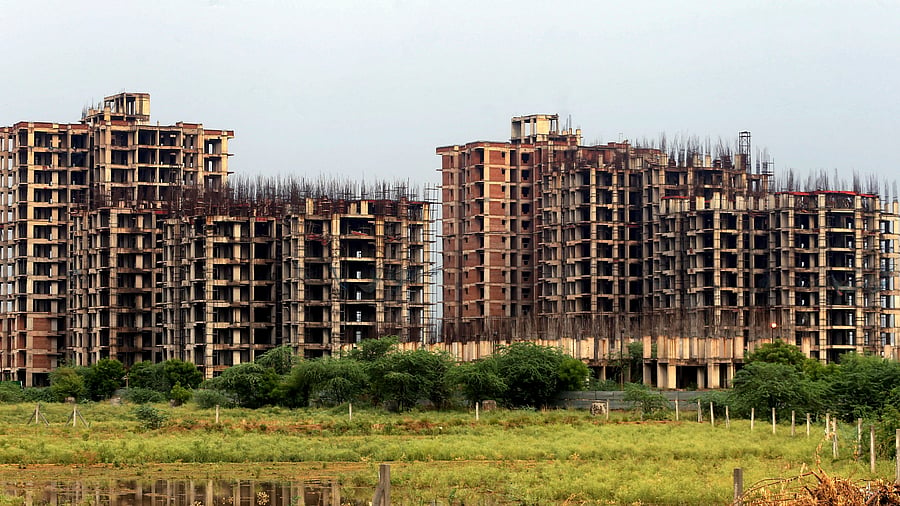
Representative image.
Credit: PTI Photo
Bengaluru: Out of a total of Rs 4.5 lakh crore alternate investment fund (AIF) investments made across sectors over the last decade till the first half of the financial year ending March 2025 (H1 FY25), real estate’s share was the highest at 17 per cent, according to Anarock Research on Monday, based on Securities and Exchange Board of India (Sebi) data.
The sector drew nearly Rs 75,468 crore, reflecting how AIFs, equity financing is increasingly bridging gaps in the real estate sector. Anuj Puri, Chairman, Anarock Group, said, "By the end of H1 FY25, total investments in the real estate sector via AIFs have risen from Rs 68,540 crore by FY24-end to Rs 75,468 crore. This is a significant 10 per cent growth in just half the financial year."
In the first nine months of 2024, the real estate sector saw Rs 28,560 crore raised through private equity investments. Of this, Rs 12,801 crore was raised via qualified institutional placements within the same period, the second highest among all the major sectors and comprising a 17 per cent overall share.
Other sectors benefiting from AIF investments are IT/ITeS, financial services, NBFCs, banks, pharma, FMCG, retail, renewable energy, and others.
AIFs in India have seen substantial decadal increase in their numbers. Funds garnered by AIFs rose by over 340 per cent in the last six years, going from Rs 2.8 lakh crore in FY19 to Rs 12.4 lakh crore in H1 FY25.
Between FY13 to FY24, the commitment raised in the AIF sector has maintained an 83.4 per cent compound annual growth rate (CAGR), signalling its growth in the investment landscape. The surge in AIF activity was largely driven by Category II AIFs with a mix of real estate funds, private equity, debt funds, and fund of funds. Over the last five years, Category II AIFs accounted for nearly 80 per cent of total AIF commitments.
Traditionally, domestic investors have been the primary source of AIFs’ funding. However, foreign portfolio investors are also stepping up, especially in the case of Category II AIFs, with almost equal participation as domestic investors.